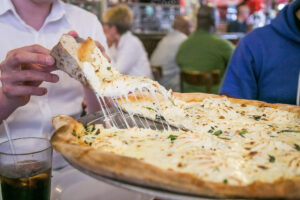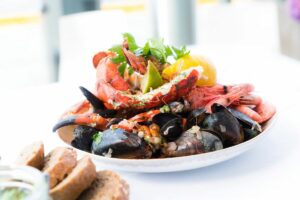Last Updated on December 13, 2025 by Emma Fajcz | Published: January 23, 2023
There’s no shortage of history (or food) in the Big Apple. Delicious remnants of the past are evident all over this town. In fact, even though New York is known and respected for its progressive and ever-changing culinary landscape, the city has plenty of old-school establishments living on.
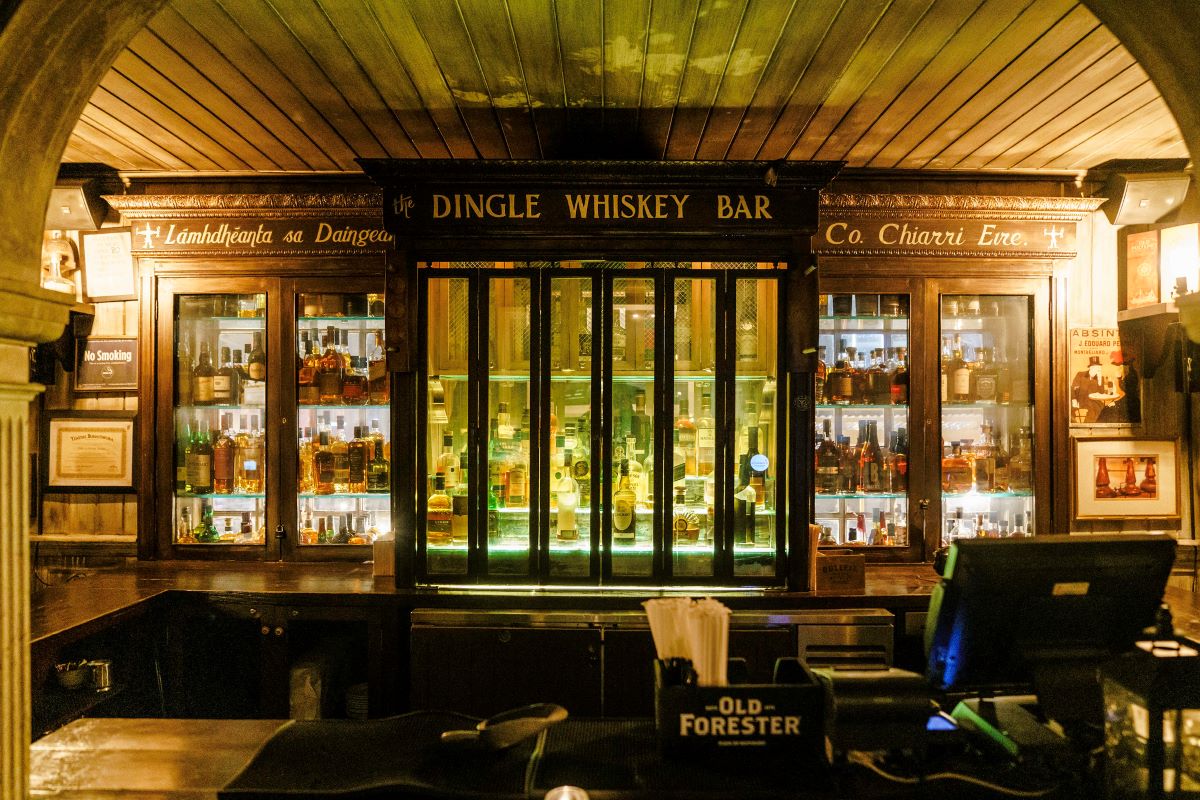
Feeling sentimental about the way New York used to be? Step back in time if only for an evening. Choose from restaurants that haven’t shed their décor in decades, storied taverns dripping with nostalgia, and neighborhood mainstays that are destinations in their own right, when you dine and drink at any of these historic restaurants in NYC.
Sardi’s
Opened in 1927, this fabled two-level restaurant is where the Tony Awards originated and it remains beloved for the hundreds of whimsical celebrity caricatures hung on the walls. Founder Vincent Sardi hired Alex Gard to sketch famous stage actors, assuming the artwork would draw more diners. Thus, Gard drew over 700 portraits in exchange for meals at Sardi’s. In 1974, Richard Baratz took over sketching the caricatures and continues to create 20 pictures of Broadway celebrities each year. Sardi’s now has over 1,300 theatre stars lining its walls.
In addition to two spacious dining rooms, Sardi’s features a large bar upstairs and “The Little Bar” on the ground floor inside the entrance, where the landmark began selling alcohol after the 21st amendment passed in 1933. Nowadays, the Midtown institution attracts tourists, locals, and famous people seeking a meal or a drink before and after a Broadway performance.
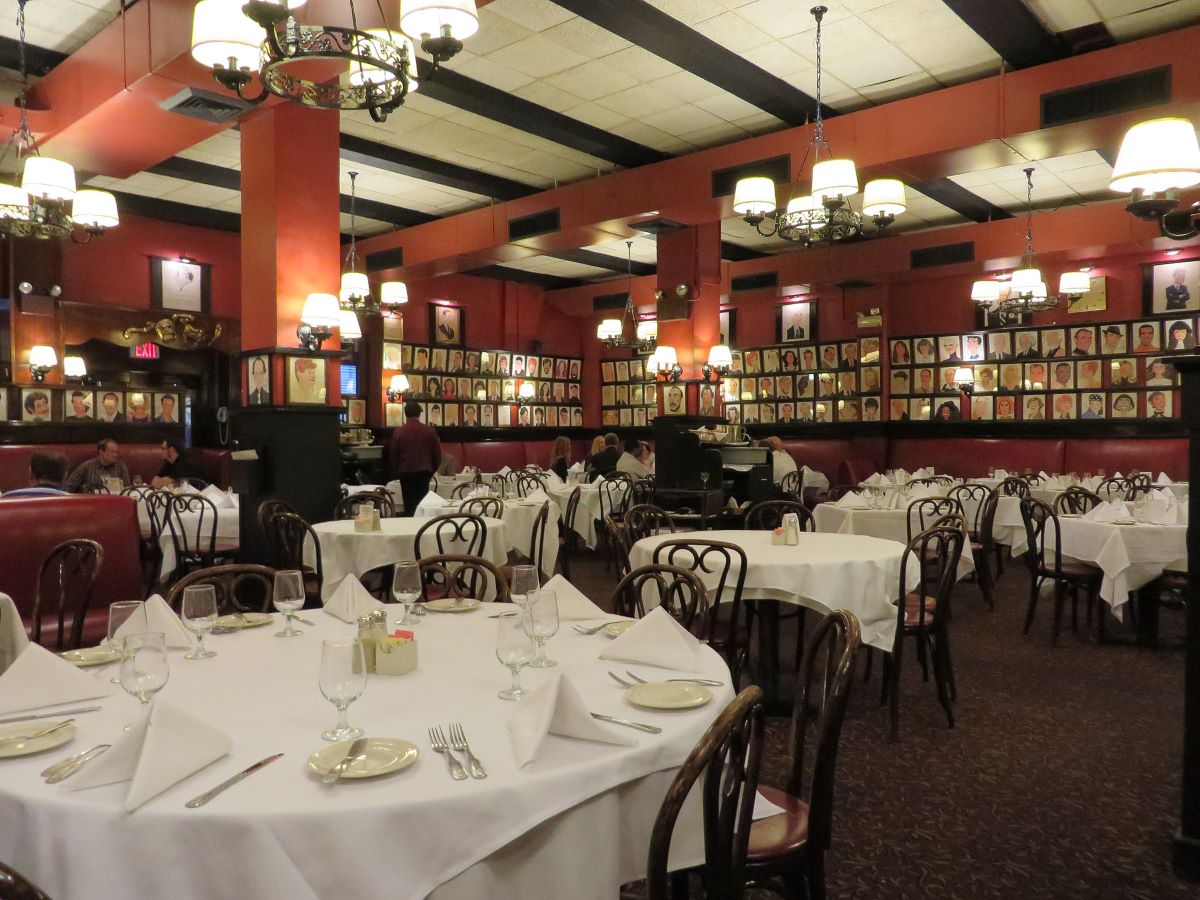
Peter Luger
This Williamsburg, Brooklyn steakhouse has long been one of the city’s top choices for quality meat. Dating to 1887, Peter Luger is one of the remaining bastions of Old New York, proving delicious food and nostalgia are a recipe for success.
The iconic steakhouse’s perfectly cooked dry-aged Porterhouse, double thick lamb chops, and side dishes like German fried potatoes, onion rings, and creamed spinach are some of the most popular items, luring patrons again and again. But Peter Luger’s half-pound burger––served until 3:45 p.m.––continuously garners stellar reviews.
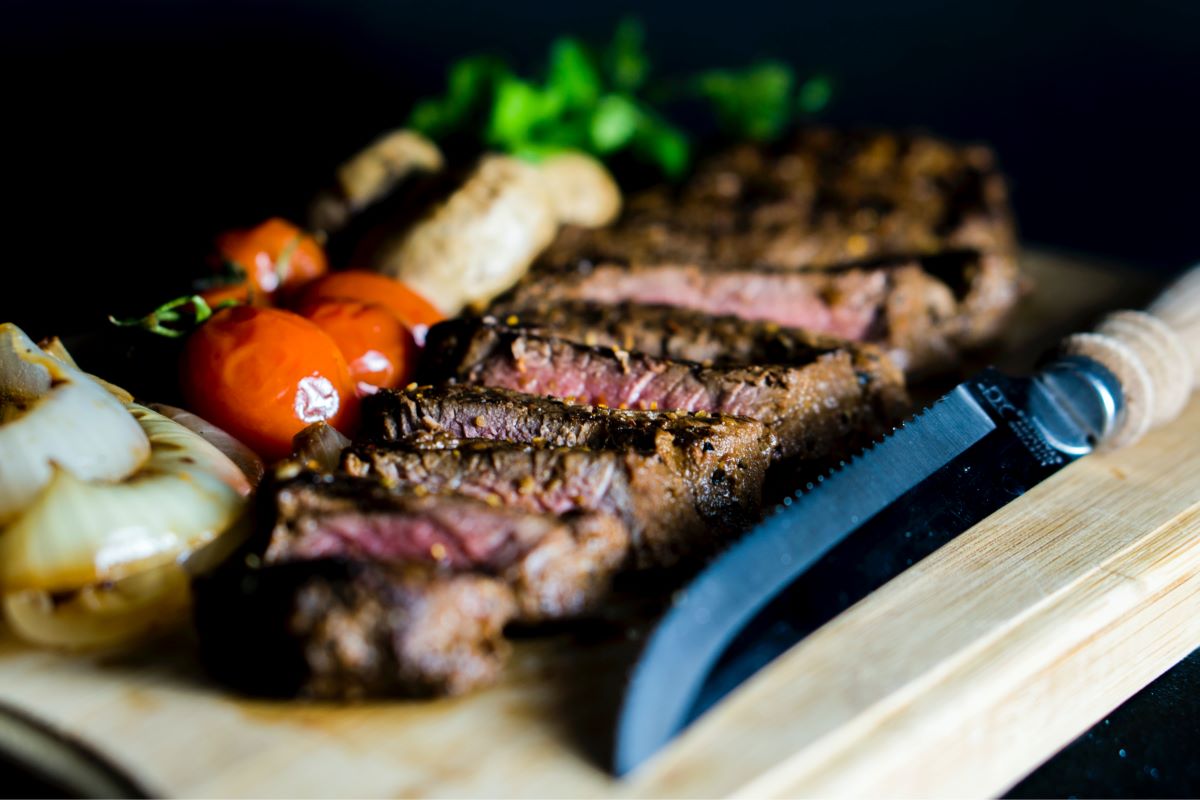
Barbetta
Perched on West 46th Street between 8th and 9th Avenues, also known as” Restaurant Row,” Barbetta is the oldest restaurant in New York owned by the founding family. This upscale, romantic eatery has been serving elegant Italian fare since 1906, with menu items including wild mushroom risotto, handmade agnolotti, and roasted rabbit in a white wine lemon sauce.
Elaborate décor–-think 18th-century antiques, swags and jabot windows treatments, ornate candelabras, and crystal chandeliers––create a European ambiance in this historic Theatre District restaurant. Meanwhile, a lovely backyard garden decorated with flowers, statues, and a fountain, transports diners during warmer months.
Fraunces Tavern
It’s tough to believe that this historic restaurant in the Financial District once served as George Washington’s headquarters for peace negotiations with the British. And it may be harder to think that any storied New York restaurant could survive for several hundred years. But Fraunces Tavern dates to 1762, and the restaurant and bar is a national historic landmark and a museum.
In modern times, the tavern serves brunch, lunch, and dinner, plating colonial-inspired eats like the Scotch egg, short rib Porter pie, and fish & chips. Housing a restaurant, the Independence Bar, Hideout Bar, and Piano Bar, the tavern is also an excellent spot for a drink––the beverage menu features more than 200 whiskeys, craft cocktails, wine, craft beer, and cider.
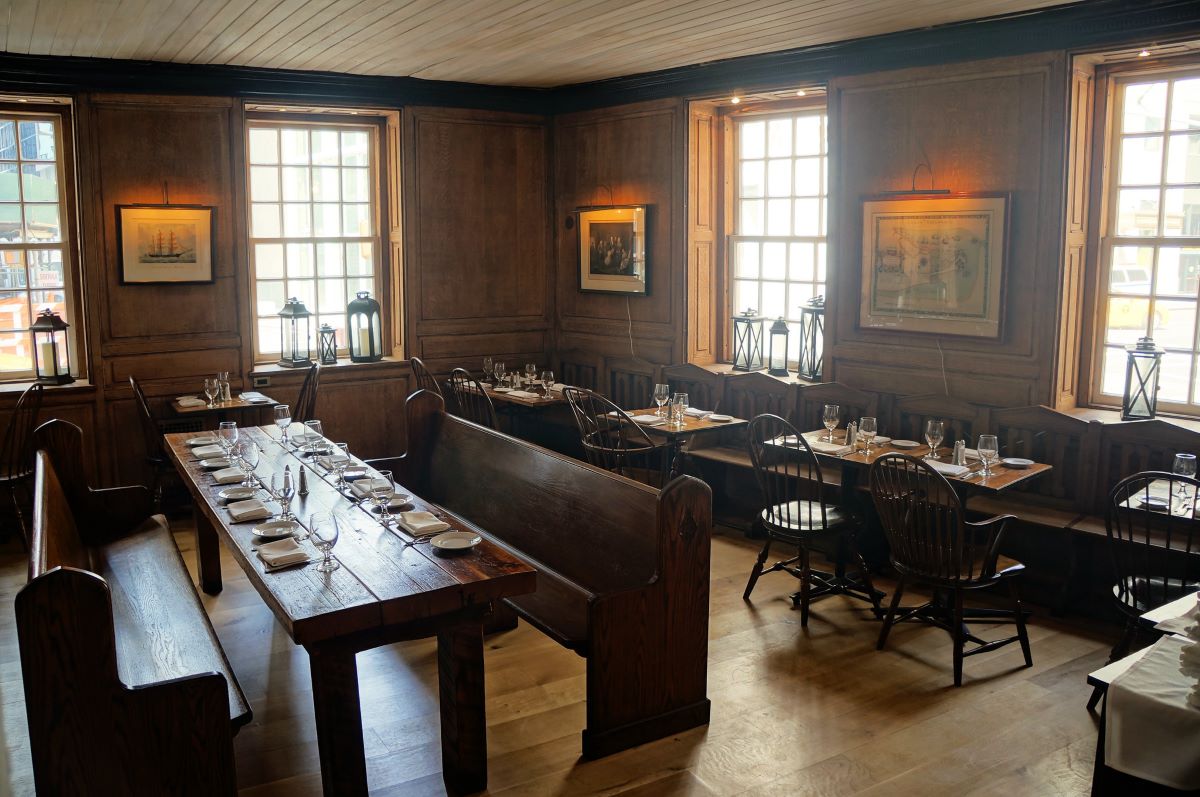
Keens Steakhouse
Long been known as a spot to attract actors, producers, playwrights, and media moguls, this Midtown Manhattan steakhouse has been around since 1885. Besides being a destination for hand-picked, dry-aged steaks and their legendary mutton chops, Keen’s Steakhouse is also a depository for artifacts.
This classic New York restaurant houses a treasure trove of antiques, such as guns and grandfather clocks, with the world’s most extensive collection of churchwarden pipes covering the ceiling. Reflecting on the time when smoking was permitted and even celebrated, the Keens “Pipe Club” has welcomed over 90,000 icons, including Teddy Roosevelt, Babe Ruth, Will Rogers, Albert Einstein, and John Barrymore, who stored their pipes at the restaurant.
Katz’s Deli
Delicatessens or variations thereof may be a dime a dozen in New York, but the likes of Katz’s Deli––a veritable institution and famous restaurant on the Lower East Side––are becoming extinct. This Kosher deli at the corner of Houston and Ludlow is known worldwide for its “mile-high” sandwiches, especially the pastrami on rye. But patrons also queue for the corned beef, full-sour and half-sour pickles, matzoh ball soup, potato knishes, and New York cheesecake.
While the food at Katz’s is satisfying (portions are huge), many tourists make the trip to the deli to see where the iconic “I’ll have what she’s having” scene with Billy Crystal and Meg Ryan in the film When Harry Met Sally, and the delicious deli fare is an extra.
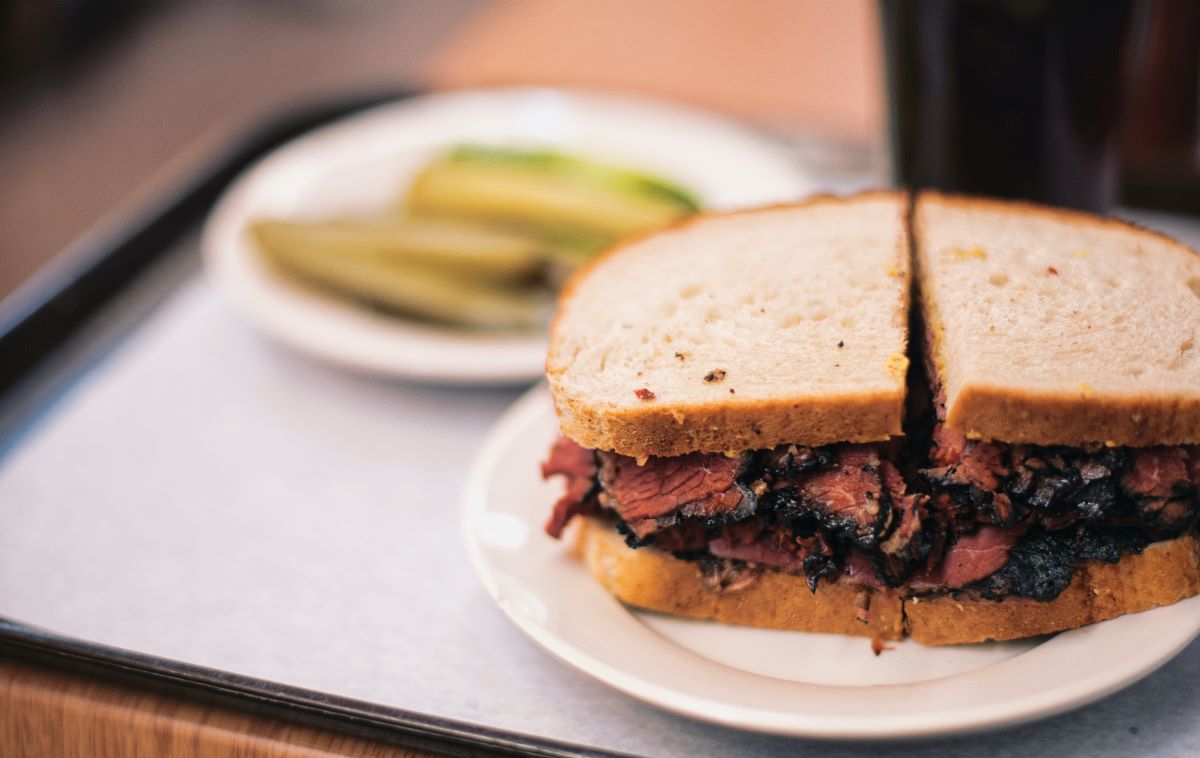
P.J. Clarke’s
Visit this Midtown East saloon’s website, and you’ll immediately notice “Est. 1884.” Yes, the original P.J. Clarke’s on Third Avenue at 55th Street has been slinging drinks, tapping brews, and flipping burgers for decades. Part of the charm of this tavern and restaurant is the décor: very little has changed in nearly 140 years. One can feel the history upon entering and how comforting to know that Frank Sinatra was a regular at table nr. 20 and Johnny Mercer wrote the tune “One for My Baby” on a paper napkin at P.J. Clarke’s.
The food is as classic as the interior design. Expect hearty dishes coming out of the kitchen; think chicken pot pie, steak frites, lobster rolls––Maine or Connecticut style––and “Proper” fish & chips, as well as daily specials.
Grand Central Oyster Bar
More than bivalves make their way onto plates at this renowned restaurant on the lower level of Grand Central Terminal. This fish destination offers more than 30 types of oysters and 25 seafood dishes, including New England clam chowder, Dover sole Meuniere, broiled black sea bass, and grilled branzino with lemon, capers, and EVOO, as well as over 30 wines by the glass.
Opened in 1913, three weeks after the train station’s debut, Grand Central Oyster Bar is not just well known for its edible offerings. The eye-catching interior, with its herringbone-tile vaulted ceilings, is a work of art and worth the trip, with or without the oysters.
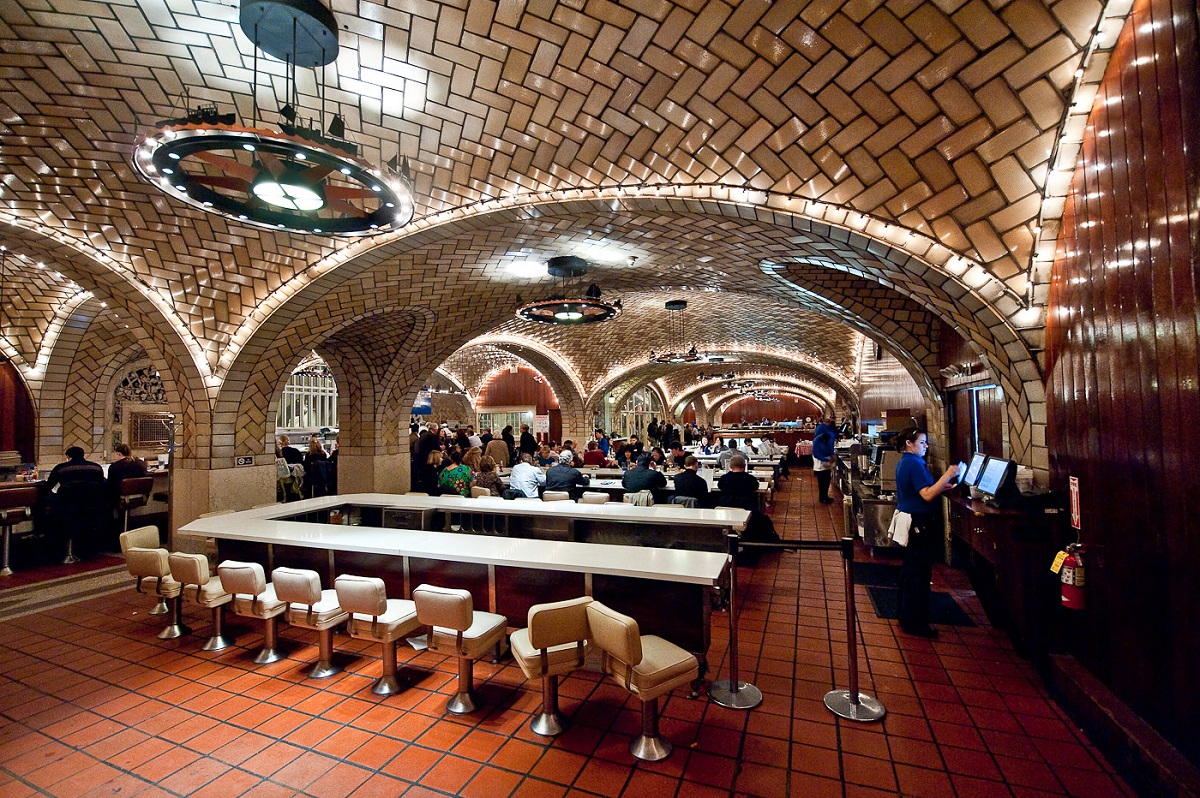
Explore NYC Like a Local
Join one of our top-rated New York City tours! With the help of our expert local guides, you’ll get to experience New York City up close and learn about its fascinating history and varied culture.

